If you’ve been sucked into the world of headphones, getting a pair of audiophile or high-end headphones should be your next step. However, you will quickly learn there are so many headphones available, making choosing one or a few challenging.
Here at HiFi Gear Lab, we can help. This article has broken down the major steps when choosing audiophile-quality headphones. And for our top picks, check out our best budget audiophile headphones.
1. Audiophile Headphones vs. Regular Headphones
Before going any further, the first thing is to understand the difference between audiophile-grade and regular headphones. The term ‘regular’ does not demean regular headphones, as seen in the following sentences.
Audiophile headphones are specifically made to give out the best audio quality. When describing the sound of audiophile-quality headphones, you’ll hear terms like transparency and detail, separation, control, soundstage, and much more. Regular headphones often focus mainly on features such as active noise-cancellation, smart tech, and waterproofing. When choosing a pair of audiophile headphones, the main focus is on the sound quality.
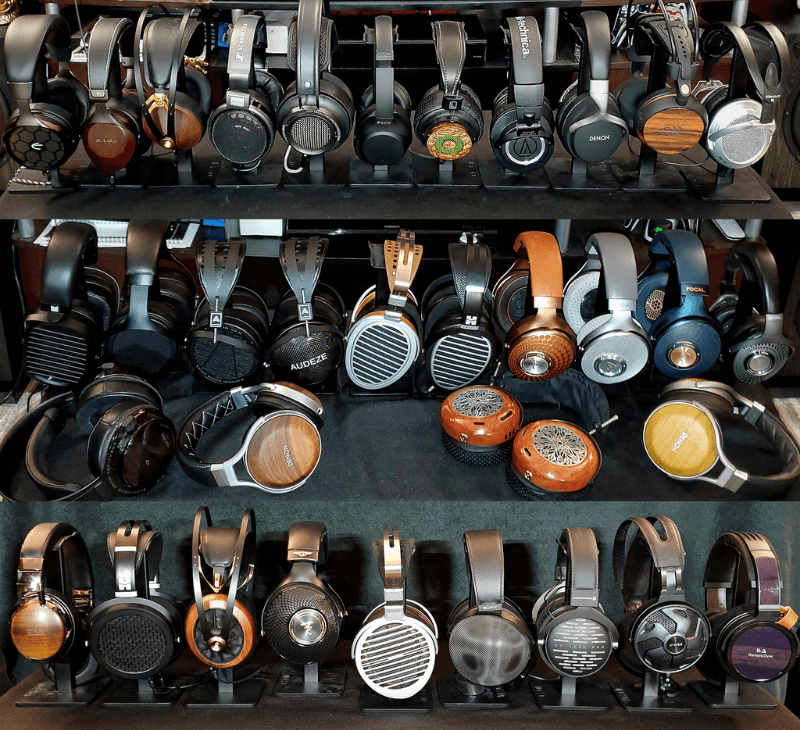
If you read through our reviews of the best high-end or budget audiophile headphones, several brands dominate the list. Names like Audeze, HiFiMAN, ZMF, Focal, and Sennheiser are mentioned regularly. You’ll see brands like Apple, Sony, Bose, Jabra, and the like for regular and everyday headphones.
The intended purpose of the headphones will also distinguish between audiophile and regular headphones. Audiophile headphones are meant for critical listening at home.
2. Over-Ear vs. In-Ear Headphones
In the world of audiophile headphones, headphones can be categorized into two broad categories; these are over-ear and in-ear headphones.
Over-ear headphones, also known as full-sized or circumaural, are the big and bulky headphones with large earcups that completely enclose our ears. These headphones have a detailed and expansive sound compared to other headphone designs. The disadvantage of most over-ear headphones is that they require an external headphone amplifier and can be heavy and uncomfortable when used for extended sessions.
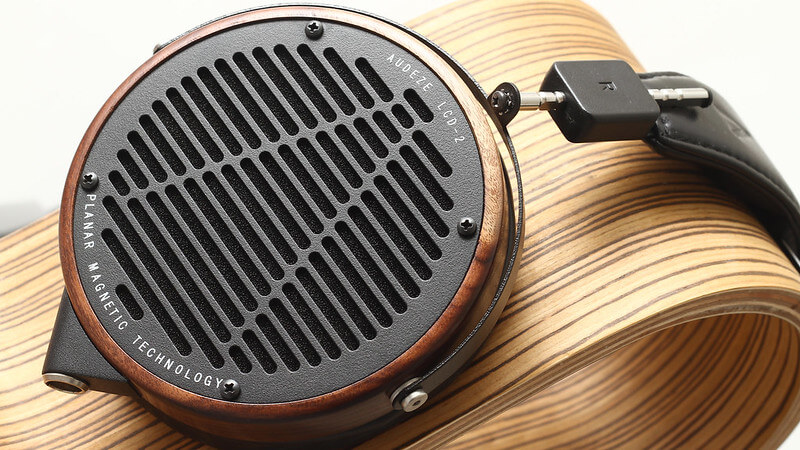
The Audeze LCD-2
In-ear headphones, also known as earbuds or In-ear monitors, IEMs, are the type that fit inside the ear canal. Earbuds sit on the ear canal while IEMs go deeper into the ear canal. In-ears have the advantage of being light and more versatile. They also have a better bass response because of the seal they form with the ear canal.
Most audiophile headphones are over-ear and in-ear models. Here at HiFi Gear Lab, we rarely recommend on-ear headphones. These sit directly on the ear rather than enclosing it or going inside. Depending on the headphone’s clamp, it can be uncomfortable quite fast.
3. Closed-Back vs. Open-Back Headphones
After you’ve chosen between over-ear and in-ear, you’ll also need to decide whether to go with a closed-back or open-back design.
Closed-back headphones are the ones that have their earcups completely sealed. This allows no sound to escape or any noise from entering the earcup. The sound of closed-back headphones can be described as narrow, similar to going to a club. However, they provide better isolation and are best for enjoying music in noisy environments.
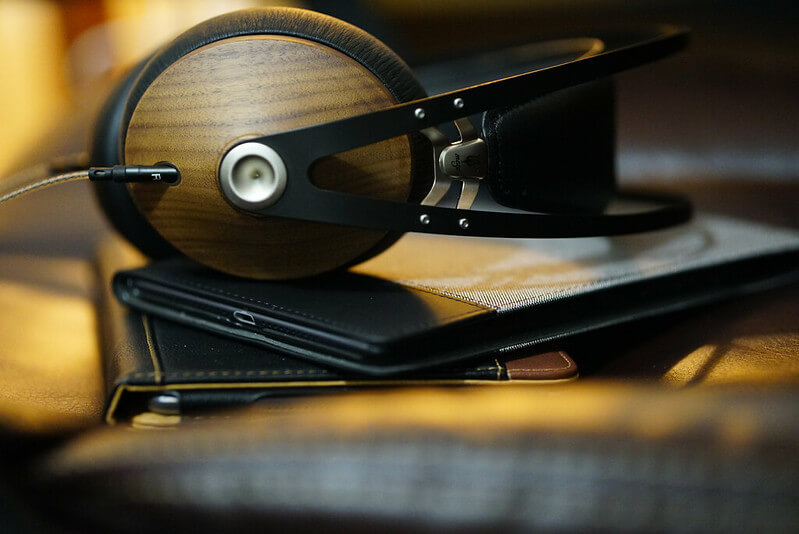
Meze 99 Classics Closed-Back Headphones
Open-back headphones have an open-back earcup characterized by grills or perforations. Because of the open design, the headphone driver interacts freely with the air, which changes the overall sound making it feel airy and natural. It also improves the soundstage, making you feel like music surrounds you. The downside of open headphones comes as no surprise. These are not to be used in noisy environments or where you’ll disturb other people.
The best headphones in the world are over-ear headphones with an open-back design. They usually sound very natural and have the best soundstage. The Meze Audio Empyrean, Focal Utopia, and Sennheiser HD800S are all open-back headphones.
4. Impedance and Sensitivity
Once you’ve decided on the type of audiophile headphones you want, then it’s time to talk about the power. To decide how much power you’ll need to drive your headphones efficiently, you’ll look at the impedance and sensitivity values.
Impedance, measured in ohms (Ω), is the electrical resistance the headphone offers to the power. Sensitivity, measured in decibels or dB, refers to how loud the headphones will be when supplied with power.
Most audiophile headphones have a high impedance, which makes them harder to drive using low-powered devices like smartphones or laptops. In this case, you’ll need an external headphone amp to drive your headphone comfortably. If your headphones have an impedance of 32 ohms or less, they can be driven by a regular smartphone or laptop. From 32-100 ohms, a smartphone can drive these but would benefit from an amplifier. As for anything higher than 100 ohms, we recommend getting yourself a headphone amp.
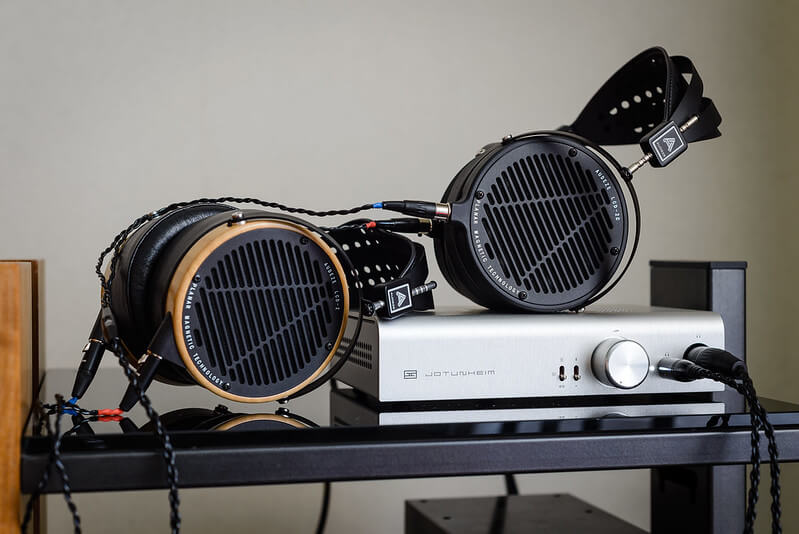
Schiit Jotunheim, Audeze LCD-2, Audeze LCD-2C
The sensitivity of a headphone is a measure of how efficient the headphone drivers are in reproducing sound or simply. How loud your headphones will get from being supplied with power, usually one milliwatt. The higher your headphones’ decibels (dB), the louder they will sound. Most headphones over 105dB are loud enough, and it’s rare to see headphones below 90 dB. If a higher volume is your concern, you’ll need to pay close attention to the sensitivity values. However, your best bet is to look at the impedance value, which is more important.
5. Headphone Driver Type
The headphone driver is the part that converts electrical audio signals to sound waves. There are three main types of headphones drivers when talking about audiophile headphones.
The first and most popular headphone driver is known as a dynamic driver. Dynamic drivers, also known as moving coil drivers, are miniature versions of the large speakers in your home speakers. A dynamic driver uses a voice coil embedded in a magnet to create sound. This headphone driver does a better job of giving out a powerful bass and achieving good sound quality will less power.
Second, there are planar magnetic drivers, also known as planar or orthos (orthodynamic). Planar magnetic drivers use two strong magnets with a thin diaphragm sandwiched between them. This results in an open, detailed, well-controlled sound compared to dynamic drivers. However, most planar headphones require a headphone amp, which is usually more expensive than dynamic drivers.
The third type of headphone driver is called electrostatic. Electrostatic headphone drivers use a thin, electrically charged mylar diaphragm sandwiched between two conductive plates. The sound from electrostatic headphones can be described as unreal and very detailed; the experience is worth it. However, the downside of electrostatic headphones is that you’ll need specialized headphone amps, which are also very expensive compared to other headphones. If you’re looking for the creme-de-la-creme of headphones, this is where you should look.
6. Wireless Audiophile Headphones
Wireless and audiophile-grade in the same sentence is always a recipe for arguments. However, in recent years, wireless Bluetooth headphones have grown and can now take their place head-to-head with wired headphones.
There are several wireless audiophile headphones in the market worth looking at. The Drop THX Panda is a great choice worth checking out. The HiFiMAN Deva is an excellent choice if you prefer an open-back design.
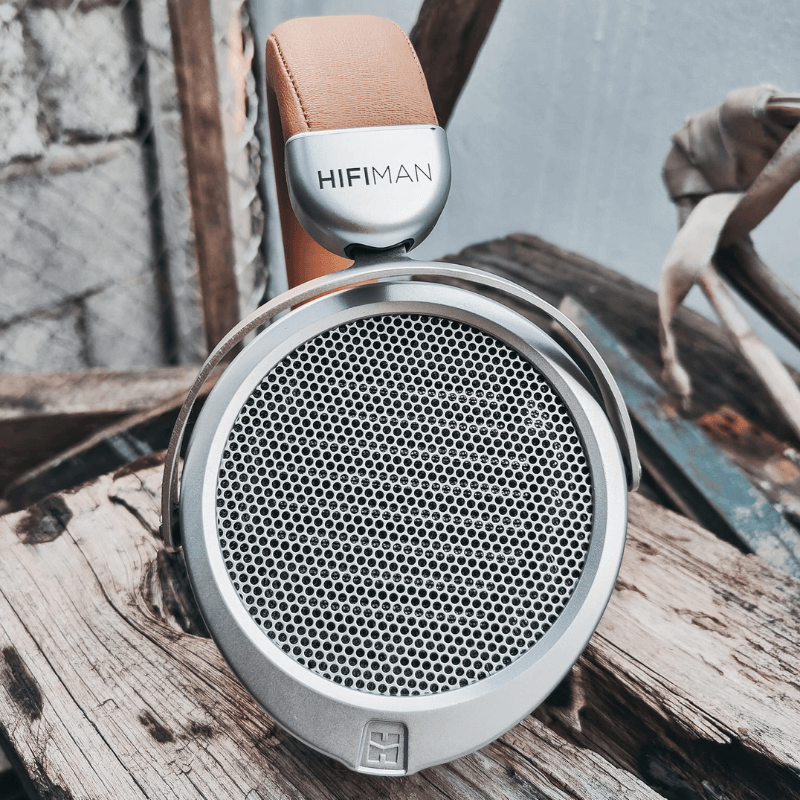
HiFiMAN Deva
If you want an audiophile-quality wireless headphone, you should skimp on features like noise-canceling. With noise-canceling headphones, you’re paying for the premium noise-canceling technology instead of the sound quality. We recommend you buy noise-canceling headphones if you absolutely need them.
7. How Much Should You Spend?
When shopping for audiophile headphones, your budget will include the headphones and other accessories you intend to use, such as headphone amps and DACs.
While you get better results with a higher price tag, this is only sometimes correct. When choosing your next audiophile headphone, spot the value for money or when a pair of headphones is performing better than its price. We always recommend you choose a headphone that is right for your needs rather than going for the most expensive one you can afford.
While some headphones will work from anything, starting with your smartphone, others require a dedicated headphone amp to sound their best. Be sure to consider this and factor it into your overall budget.